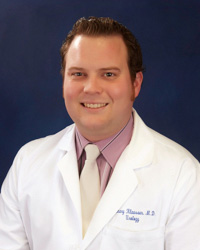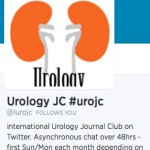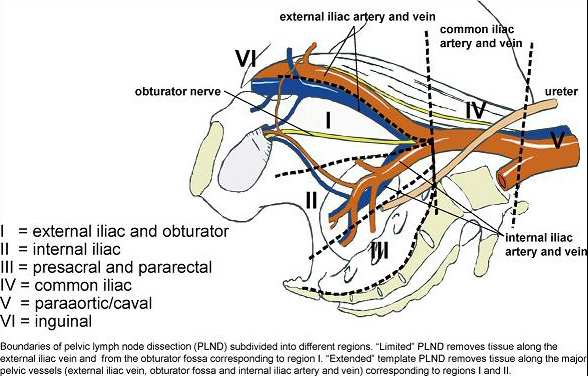Editorial: Unveiling the surgical risk associated with neoadjuvant chemotherapy in bladder cancer
In this issue of BJU International, Johnson et al. [1] examine the association between neoadjuvant chemotherapy (NAC) for bladder cancer and 30-day morbidity related to radical cystectomy (RC). Level 1 evidence supports use of cisplatin-based NAC for bladder cancer; a meta-analysis of 11 randomised trials including 3005 patients who received NAC found a 5% absolute increase in 5-year overall survival and a 9% absolute increase in 5-year disease-free survival compared with RC alone [2]. Despite this, recent studies have reported underutilisation of NAC at ≈20% [3], with several reasons proposed for this ‘non-compliance’ to guidelines. A 2013 National Cancer Data Base (NCDB) analysis found that increasing age, lower patient income, and treatment at a non-academic institution (P < 0.01) negatively influenced the receipt of NAC, while higher clinical stage and fewer comorbid conditions were associated with higher likelihood of receiving NAC (P < 0.01) [3].
Another relevant concern is that NAC may increase perioperative complications for RC given the toxicities associated with chemotherapy, advanced age and often high rates of renal and cardiac comorbidities among potential candidates [4]. Credit should be given to Millikan et al. [5] for first negating this fear in 2001 with a randomised trial comparing NAC vs adjuvant chemotherapy in patients with bladder cancer; this study did not find any increase in perioperative morbidity.
The present analysis by Johnson et al. [1] further debunks this misconception in contemporary practice (2005–2011), drawing on the American College of Surgeons National Surgical Quality Improvement Program (NSQIP), which prospectively collects a sample of risk-adjusted validated surgical patient data from >450 participating USA hospitals. The authors show that NAC was not an independent predictor of complications, reoperation, wound infection or dehiscence. The robustness of these findings is reinforced by the shorter adjusted length of stay among patients receiving NAC. Given that scant data exists on this topic, the authors contribute a valuable paper that substantially adds to the literature.
Despite its strengths, the study should be interpreted in light of notable limitations that the authors acknowledge. Many crucial variables are not tracked by the NSQIP and therefore cannot be accounted for, including type of chemotherapy regimen, delay between chemotherapy and surgery, surgical technique (open, laparoscopic, robotic), surgical quality (margins, extent of lymphadenectomy), clinical/pathological stage of bladder cancer, and hospital/surgeon volume. Besides, because RC is a morbid procedure with a mean length of stay of 11 days, 30-day complication rates do not capture its true morbidity as well as 90-day rates. In particular, several common complications, such as postoperative ileus or small bowel obstruction, tend to occur later during the postoperative recovery period. As such, chances are that the event rate is biased downward by the short-term duration of data capture by the NSQIP. This study also cannot fully examine the association of NAC with certain subtypes of complications, including gastrointestinal or bleeding complications, especially when other investigators examining robotic RC have reported a conflicting increase in perioperative complications associated with NAC [6] driven by a 27% rate of gastrointestinal complications, which are not tracked by the NSQIP. Of note, unadjusted rates of transfusion and bleeding events were both higher in the NAC group in the present study.
One of the relevant and heartening observations of the report is the gradual increase in the use of NAC over the study period from 4% of eligible patients to 11%, close to the NCDB estimates of 7.6% in 2006 to 20.9% in 2010 (P < 0.01) [3]. Interestingly, there was an increased probability of any complication in the most recent time period (odds ratio 0.47 for 2005–2009 relative to 2010–2011 in the primary multivariate model, P < 0.001). A plausible explanation is that as physicians have heeded the message to increase usage of NAC, treatment has expanded into a wider population with more comorbidities and therefore a greater propensity for complications. It would have been of interest to address this point by restricting the analyses to the most recent data to see if NAC does indeed predict perioperative complications in the most recent period from 2010 to 2011.
Finally, given the lack of detail available in the NSQIP, other relevant questions could not be addressed. Among them it would be relevant to know if complication rates vary between standard MVAC (methotrexate, vinblastine, doxorubicin and cisplatin) and newer chemotherapy regimens such as dose dense MVAC (DD-MVAC) or gemcitabine plus cisplatin (GC). Similarly, the role of the delay or the elapsed time between chemotherapy and surgery on complications might be helpful in future trial planning.
Additional work still needs to be done to identify prognostic factors for both perioperative complications and long-term outcomes after NAC, so that this valuable therapy can be appropriately provided to the correct patients. Indeed, given the lack of randomised controlled trial data investigating less toxic regimens than MVAC, perhaps NAC is underused because clinicians and patients are underserved by the available data. The authors should be commended for their efforts in deconstructing possible barriers to increased uptake of NAC, a therapy known to confer survival benefits for our patients with bladder cancer.
Joaquim Bellmunt,*† Jeffrey J.Leow‡ and William Martin-Doyle§
*Bladder Cancer Center, Dana-Farber/Brigham and Women’s Cancer Center, Boston, MA, USA; †University Hospital Del Mar-IMIM, Barcelona, Spain; ‡Brigham and Women’s Hospital, Division of Urology and Center for Surgery and Public Health, Boston, MA, USA; §University of Massachusetts Medical School, Worcester, MA, USA
References
- Johnson DC, Nielsen ME, Matthews J et al. Neoadjuvant chemotherapy for bladder cancer does not increase risk of perioperative morbidity. BJU Int 2014; 114: 221–228
-
Bellmunt J, Orsola A, Wiegel T et al. Bladder cancer: ESMO Clinical Practice Guidelines for diagnosis, treatment and follow-up. ESMO Guidelines Working Group. Ann Oncol 2011; 22 (Suppl. 6): 45–49
- Zaid HB, Patel SG, Stimson CJ et al. Trends in the utilization of neoadjuvant chemotherapy in muscle-invasive bladder cancer: results from the National Cancer Database. Urology 2014; 83: 75–80
- Meeks JJ, Bellmunt J, Bochner BH et al. A systematic review of neoadjuvant and adjuvant chemotherapy for muscle-invasive bladder cancer. Eur Urol 2012; 62: 523–533
- Millikan R, Dinney C, Swanson D et al. Integrated therapy for locally advanced bladder cancer: final report of a randomized trial of cystectomy plus adjuvant M-VAC versus cystectomy with both preoperative and postoperative M-VAC. J Clin Oncol 2001; 19: 4005–4013
- Johar RS, Hayn MH, Stegemann AP et al. Complications after robot-assisted radical cystectomy: results from the International Robotic Cystectomy Consortium. Eur Urol 2013; 64: 52–57















